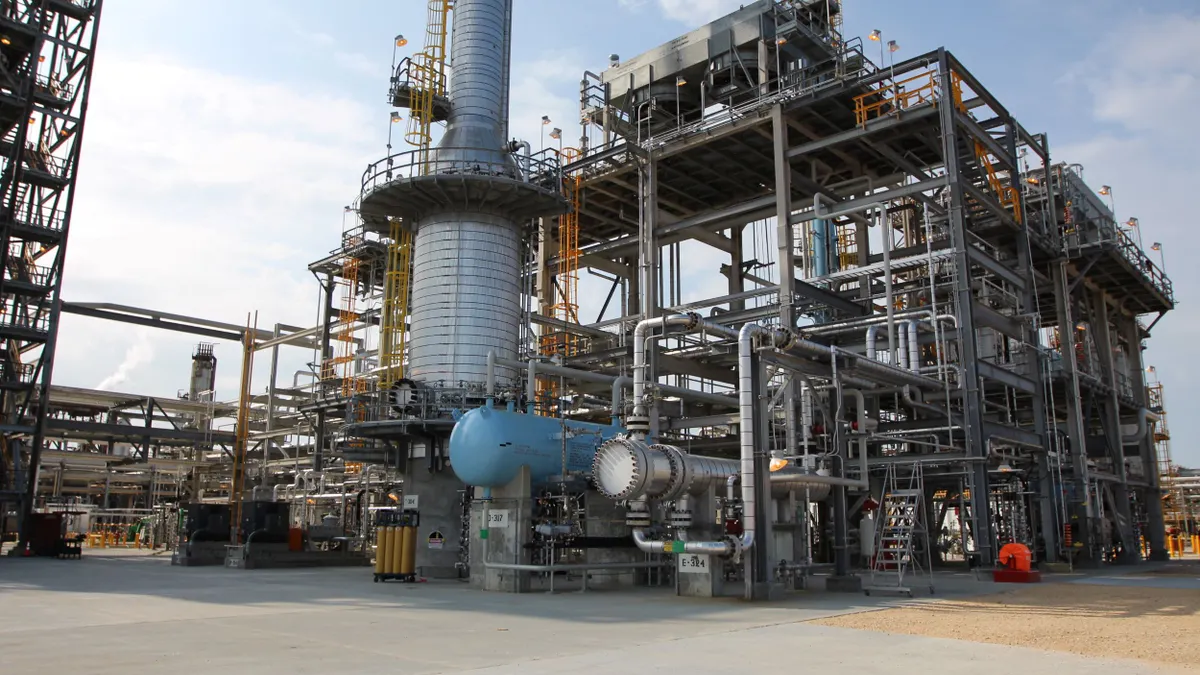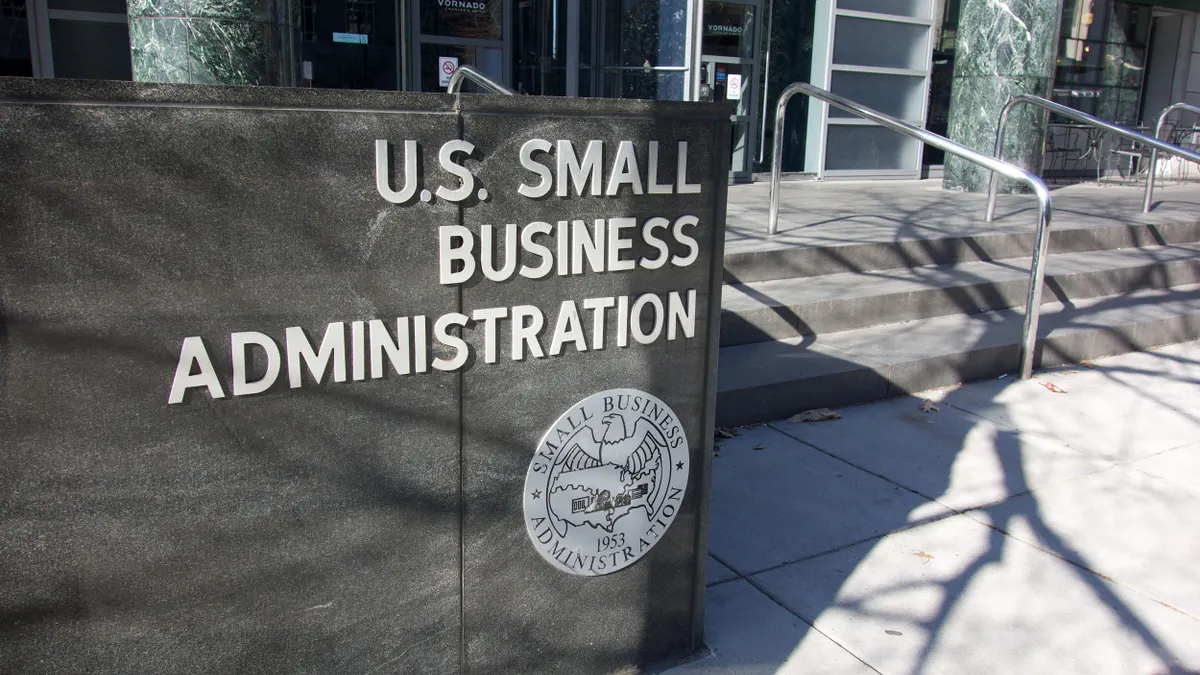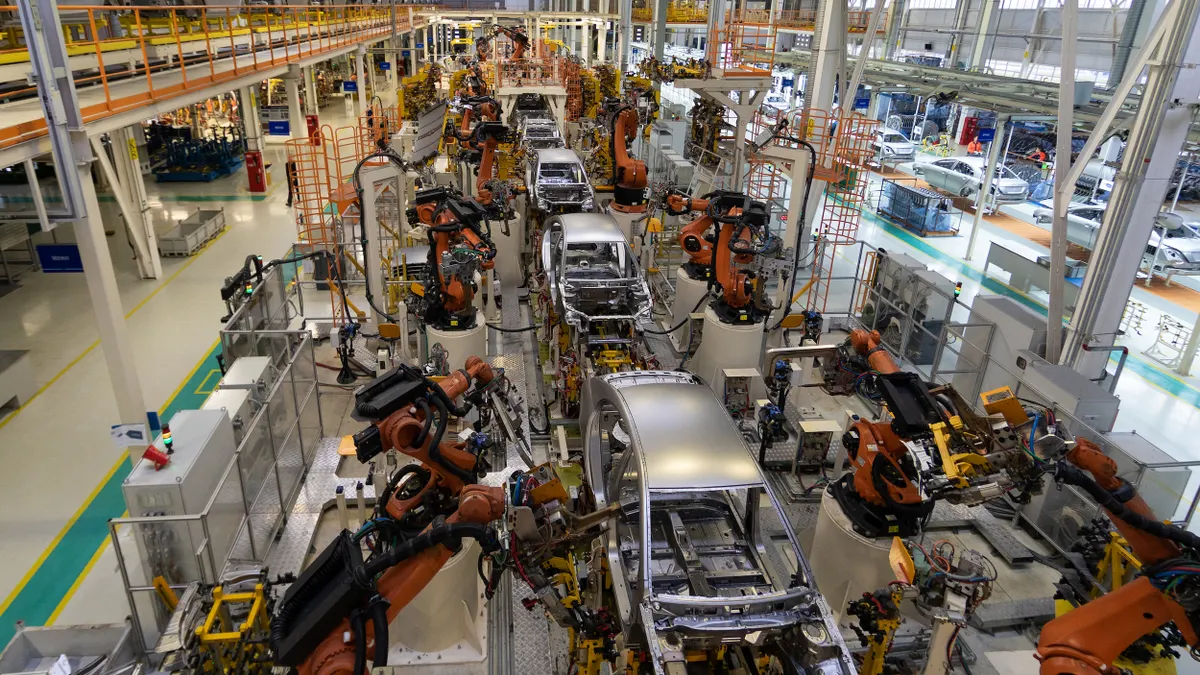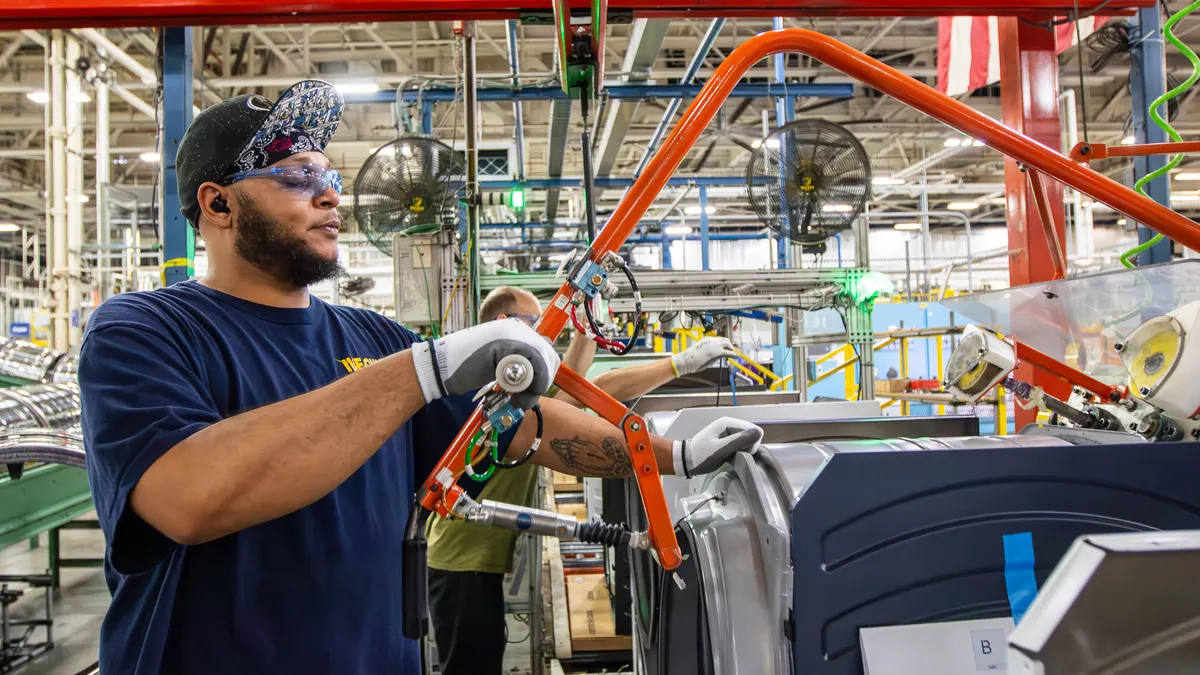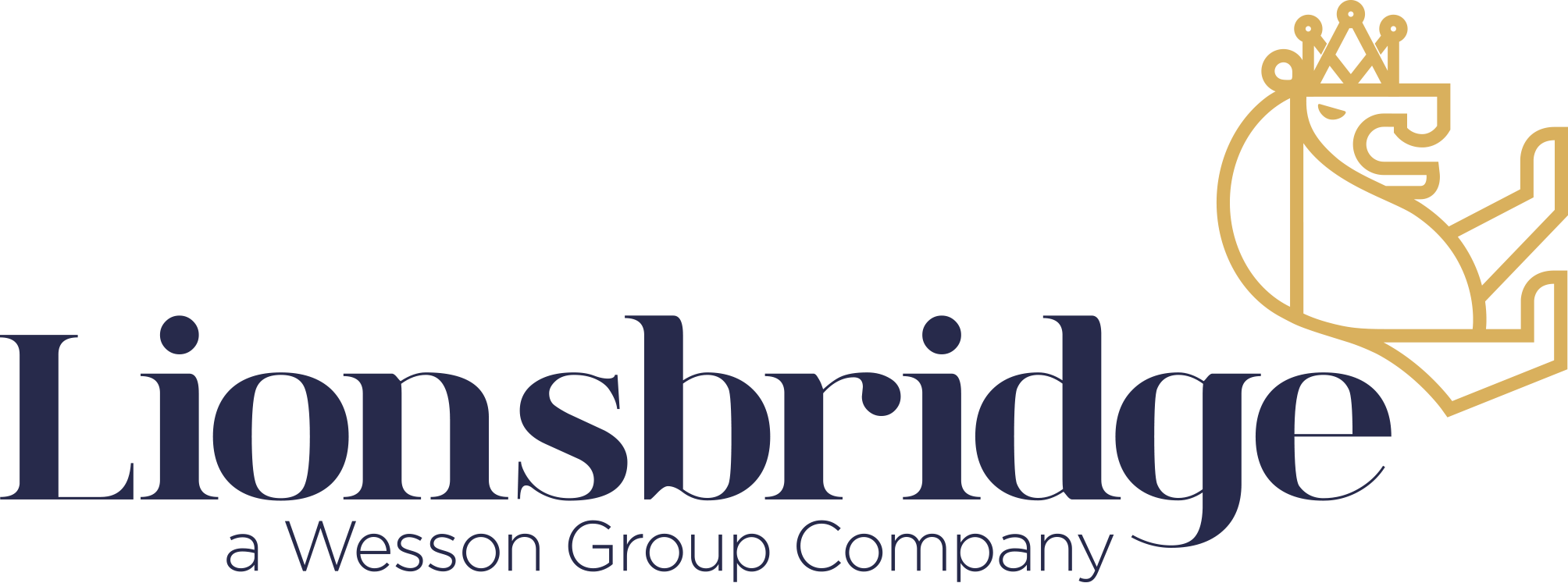Tariff supply chain effects continue to be a concern as the manufacturing industry contracts in September, according to the Institute for Supply Management’s latest Purchasing Managers’ Index.
ISM’s index registered 49.1% in September, up 0.4 percentage points compared with August. A PMI index below 50% indicates an industry in contraction.
“Demand continues to be an issue with weak readings in three of our four subcategories,” Susan Spence, chair of the ISM’s Manufacturing Business Survey Committee, said on a call Wednesday.
However, one of the four demand indicators improved, Spence said in the report. Backlog orders saw a slight increase to 46.2%, which may be attributed to the rise in new orders in August. However, new orders decreased by 2.5 percentage points to 48.9%.
New export orders, which are one of four demand indicators, “really lost a lot,” 4.6 points down to 43% compared to August’s 47.6%, Spence said, adding, “Not a surprise, given all the tariff news here.”
The customer inventory index slightly fell to 43.7%, down 0.9 percentage points, indicating a faster rate of contraction. “That is the area that we feel encouraged by,” Spence said on the call. “The lower it goes, the more probable it is that our customers are going to order.”
Production rose 3.2 percentage points from August’s figures to 51%, though it’s believed that this is due to an uptick in orders in August.
Suppliers overall made faster deliveries in September than in August, according to the ISM report. In August, the supplier deliveries index read 51.3% compared with 52.6% in September, though the index indicated slower delivery performance for the second consecutive month. A reading above 50% indicates slower deliveries, which typically occurs as the economy improves and customer demand increases.
The employment index registered at 45.3%, up 1.5 percentage points from August’s 43.8%. “For every comment about hiring, we have three that are about not billing or laying off. So that continues to be negative,” Spence said about the survey results.
Of the six biggest manufacturing industries, petroleum and coal products were the only sectors to have seen growth, according to the report.
The manufacturing sector’s gross domestic product contracted in September by 67%, down from 69% in August. With staff reductions and hiring freezes, along with contraction and continuing price increases, the manufacturing economy is struggling, Spence said.
“The big news is strong contraction, which was only 4% of manufacturing GDP last month, is up to 28% so that is not a good sign,” Spence said.
The federal government is partially shut down as of midnight Wednesday, adding to the economic uncertainty. Spence said impacts to each manufacturing sector depend on whether the sector relies on the federal government to approve their products or complete audits.
“Normally, on its own, it wouldn't have maybe as big of an impact, but you’ve got an already weak economy, even though we are above the 42% in PMI,” Spence said. “So in general, it is expanding, but it’s been battered. And so this, on top of everything else, it cannot be helpful.”
S&P’s September PMI report reflected a somewhat positive look at 52%, but it’s down from August’s 53%, indicating a “weaker rate of expansion of the manufacturing economy.”
Despite manufacturing producing a rise for a fourth successive month, the recovery has lost momentum, Chris Williamson, chief business economist at S&P Global Market Intelligence, said in a statement. Companies reported a decline in order to book growth as tariffs continued to weigh on exports, according to S&P’s report.
Manufacturers have produced and stockpiled more goods to stay ahead of tariff implementation, which presents a “downside risk” to future production, Williamson said.
“A growing uncertainty, however, relates to supply chains, with September seeing an increase in tariff-related vendor delays, which threaten to curb production and push up prices if these difficulties persist or intensify,” Williamson said.



